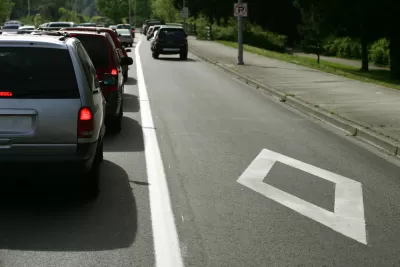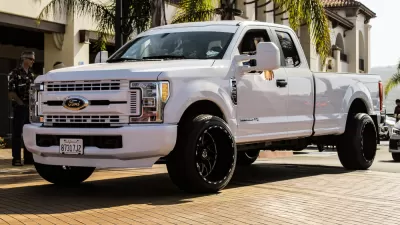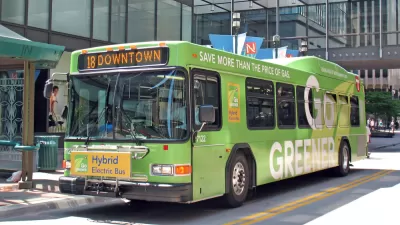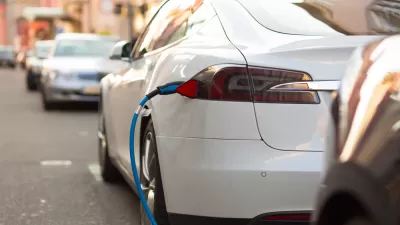Last year set two notable vehicle records. First, the most cars ever sold, at 17.54 million. Second, light trucks accounted for almost 61 percent of all sales. Sales of more fuel efficient car fell, though electric vehicle sales increased.

"The strength of new 'car' sales was actually driven by light trucks, which reached a record 60.9 percent of all sales," reports Lawrence Ulrich, The Drive’s chief auto critic. Cheap gas, by historic standards, played a significant role.
Pickups and SUVs [led by crossovers] flew out of dealerships as fast as people could pump them full of affordable unleaded. Light truck sales leapt up 7.4 percent, even as traditional cars slumped by 8.9 percent in the face of the SUV onslaught.
Fuel economy and emissions
As a result of the major increase in SUV purchases and decrease in more efficient cars, "the average fuel economy of new vehicles sold in 2016 was 25.2 mpg, down 0.1 mpg from 2015," according to an email by Michael Sivak, director of Sustainable Worldwide Transportation for the University of Michigan Transportation Research Institute, who referenced the group's latest data on vehicle fuel economy and emissions.
The drop in fuel economy translates to higher emissions. "The average new-vehicle driver produced 17% lower emissions in October 2016 than in October 2007, but 4% higher emissions than the record low reached last time in November 2015," Sivak adds.
Electric vehicle (EV) sales also set a record last year according to sales data provided by Jay Cole for Inside EVs.
In the United States, sales of all plug-in electrical vehicles (PEVs: any vehicle that has a plug and batteries so it can run on electricity, even if for only a short distance) was 159,139 last year, compared to 116,099 in 2015, an increase of 43,040 vehicles, or 37 percent. Not bad considering the price of gas!
But how does this good news compare with the total amount of vehicles sold? Less than 1 percent (0.91 percent, to be precise), not so good, but compared to last year's PEV share of 0.66 percent, it's an increase of 38 percent!
At that rate of progress, will EVs become more mainstream in the near future? One thing that will make a difference would be a significant increase in oil prices, but that appears unlikely in the near term.
FULL STORY: American Car Sales Just Set Another Record in 2016

Planetizen Federal Action Tracker
A weekly monitor of how Trump’s orders and actions are impacting planners and planning in America.

Restaurant Patios Were a Pandemic Win — Why Were They so Hard to Keep?
Social distancing requirements and changes in travel patterns prompted cities to pilot new uses for street and sidewalk space. Then it got complicated.

Map: Where Senate Republicans Want to Sell Your Public Lands
For public land advocates, the Senate Republicans’ proposal to sell millions of acres of public land in the West is “the biggest fight of their careers.”

Maui's Vacation Rental Debate Turns Ugly
Verbal attacks, misinformation campaigns and fistfights plague a high-stakes debate to convert thousands of vacation rentals into long-term housing.

San Francisco Suspends Traffic Calming Amidst Record Deaths
Citing “a challenging fiscal landscape,” the city will cease the program on the heels of 42 traffic deaths, including 24 pedestrians.

California Homeless Arrests, Citations Spike After Ruling
An investigation reveals that anti-homeless actions increased up to 500% after Grants Pass v. Johnson — even in cities claiming no policy change.
Urban Design for Planners 1: Software Tools
This six-course series explores essential urban design concepts using open source software and equips planners with the tools they need to participate fully in the urban design process.
Planning for Universal Design
Learn the tools for implementing Universal Design in planning regulations.
Heyer Gruel & Associates PA
JM Goldson LLC
Custer County Colorado
City of Camden Redevelopment Agency
City of Astoria
Transportation Research & Education Center (TREC) at Portland State University
Camden Redevelopment Agency
City of Claremont
Municipality of Princeton (NJ)





























